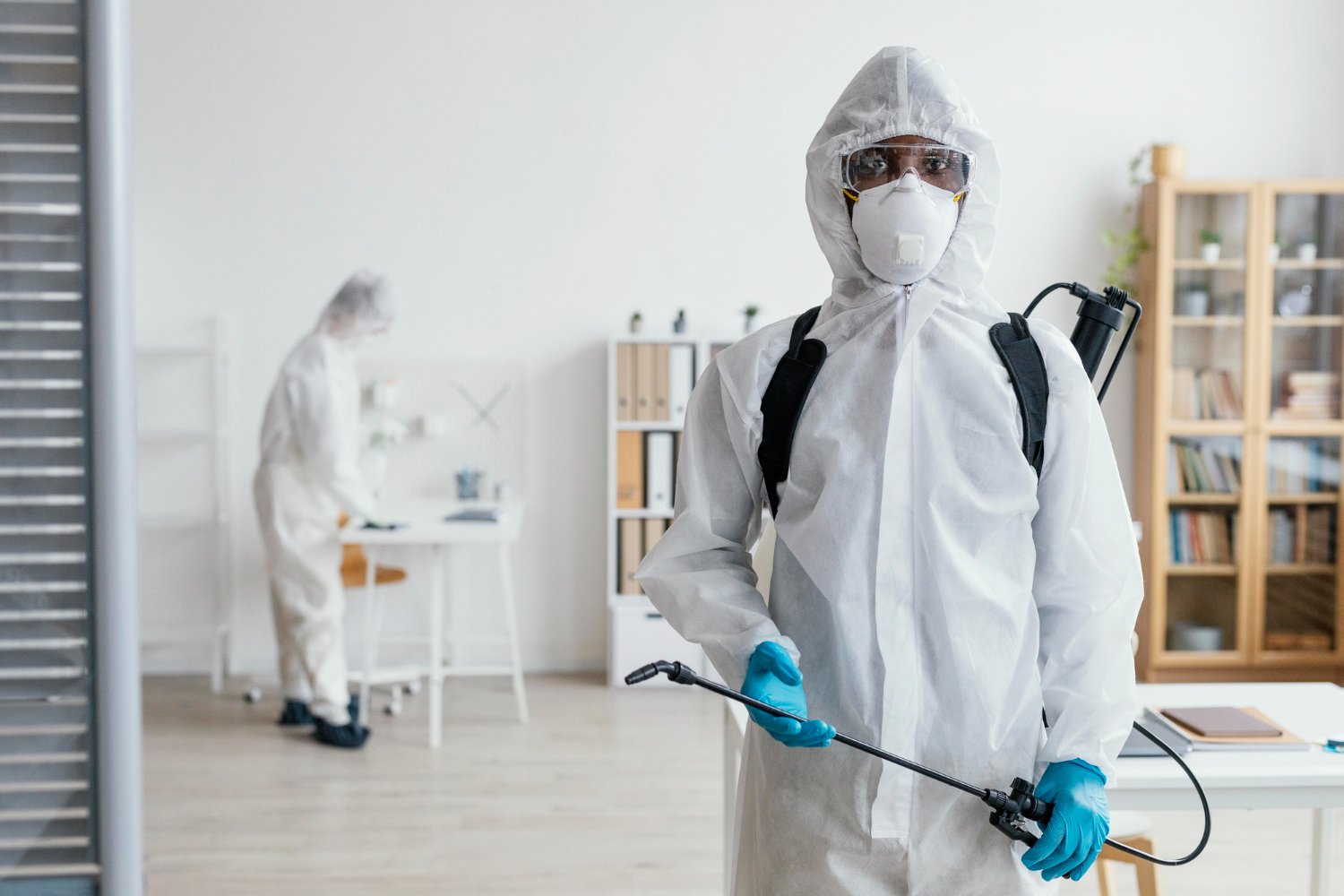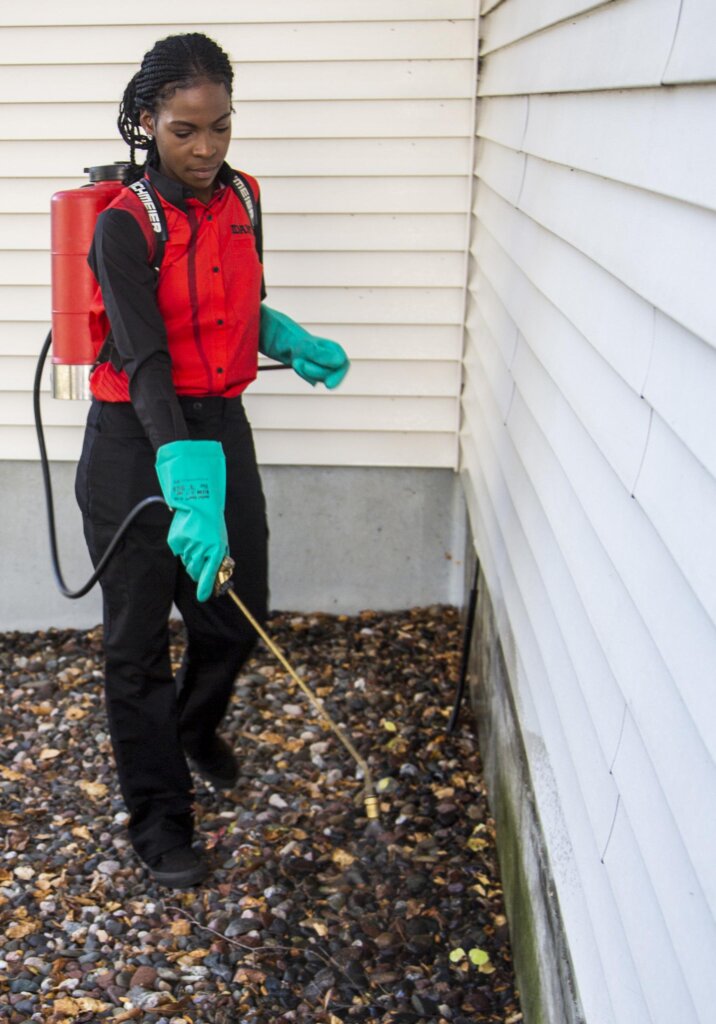A1 Bed Bug Exterminator Charlotte - Specialized Bed Bug Elimination
Wiki Article
Bed Pest Treatment Malfunction: Contrasting Chemical Vs. Non-Chemical Solutions
In the realm of bug control, particularly when taking care of the persistent problem of bed pests, the choice between chemical and non-chemical treatment remedies can be an essential one. Both methods supply distinct advantages and downsides, influencing variables such as performance, safety factors to consider, and general cost. By examining the nuanced details of each approach, a clearer understanding of which path to seek in dealing with a bed insect infestation can be obtained.Effectiveness of Chemical Therapies
Chemical treatments for bed pest infestations have actually been commonly recognized for their rapid and powerful efficacy in getting rid of these insects. When taking into consideration the effectiveness of chemical therapies, it is vital to understand that they can give a comprehensive and quick service to a bed bug problem.Moreover, chemical treatments have the benefit of providing residual effects, suggesting that they can proceed to eliminate bed pests also after the preliminary application. This recurring action is specifically useful in combating any potential re-infestations. Additionally, the fast activity of chemical treatments can bring relief to individuals encountering serious bed bug infestations, permitting them to regain control of their space promptly.
Safety And Security Interest In Chemical Solutions
One crucial element that requires cautious factor to consider when making use of chemical options for bed insect treatment is guaranteeing the security of passengers and the setting. Direct exposure to certain chemicals made use of in bed bug therapies can lead to breathing concerns, skin irritation, or various other adverse responses, especially in people with pre-existing problems or level of sensitivities.Moreover, the ecological influence of chemical options is an additional considerable consideration. Some chemicals utilized in bed bug therapies may be dangerous to helpful insects, wildlife, and ecosystems if they leach right into the dirt or water systems. It is necessary to utilize chemical therapies judiciously, complying with safety and security guidelines, and thinking about much less harmful alternatives to mitigate these threats and ensure the reliable and secure administration of bed pest invasions.
Benefits of Non-Chemical Techniques
Thinking about the possible safety concerns and ecological effect connected with chemical solutions for bed insect treatment, discovering non-chemical approaches provides a promising choice with several unique benefits. Non-chemical treatments are ecologically friendly, as they do not contribute to air or water air pollution, making them a sustainable choice for insect control.In addition, non-chemical remedies can be reliable in targeting bed bugs, consisting of hard-to-reach areas where chemical therapies may not pass through - A1 exterminators charlotte nc. Approaches such as warmth therapy, vacuuming, heavy steam cleaning, and cushion coverings provide thorough eradication without the usage of hazardous chemicals.
Limitations of Non-Chemical Treatments

Furthermore, non-chemical therapies often call for numerous applications to attain successful elimination. This can be lengthy and might not always guarantee complete elimination of all bed insects and their eggs, especially in hidden or hard-to-reach locations.
Furthermore, the success of non-chemical therapies greatly relies upon appropriate implementation and thoroughness, which can be challenging for people without professional experience. Poor application of non-chemical methods might result in insufficient obliteration, causing consistent invasions and the requirement for added treatments.
Consequently, while non-chemical treatments have their advantages, it is necessary to recognize these limitations and consider them when determining the most reliable technique for managing bed pest invasions.
Cost Contrast: Chemical Vs. Non-Chemical Options
Given the limitations linked with non-chemical therapies, an essential element to evaluate in the context of bed bug monitoring is the price find more comparison in between chemical and non-chemical choices. Chemical therapies generally entail the application of pesticides by professionals, which can vary from $250 to $900 per room, depending upon the severity of the invasion and the dimension of the area to be treated. In comparison, non-chemical treatments like heat treatment or heavy steam can be much more costly, with prices varying from $1,000 to $6,000 for a whole home. While the initial price of chemical therapies might seem lower, several therapies might be needed to completely eliminate the problem, possibly raising the total cost. On the other hand, non-chemical options might offer a more green and lasting service, although they can be cost-prohibitive for some individuals. Inevitably, when considering the expense of bed bug treatment options, it is important to weigh the in advance expenditures versus the efficiency and lasting sustainability of the selected technique.Final Thought

Thinking about the prospective security concerns and environmental impact connected with chemical remedies for bed bug treatment, checking out non-chemical approaches provides an appealing option with numerous unique advantages.Given the restrictions associated with non-chemical treatments, an essential element to assess in the context of bed pest management is the cost comparison between chemical and non-chemical choices. In contrast, non-chemical therapies like warm therapy or vapor can be extra expensive, with costs varying from $1,000 to $6,000 for a whole home. While the first expense of chemical treatments might seem reduced, numerous treatments may be required to totally eliminate the problem, potentially increasing the total price.In conclusion, when contrasting chemical and non-chemical bed insect therapy alternatives, it is necessary to consider performance, safety and security, advantages, restrictions, and expense.
Report this wiki page